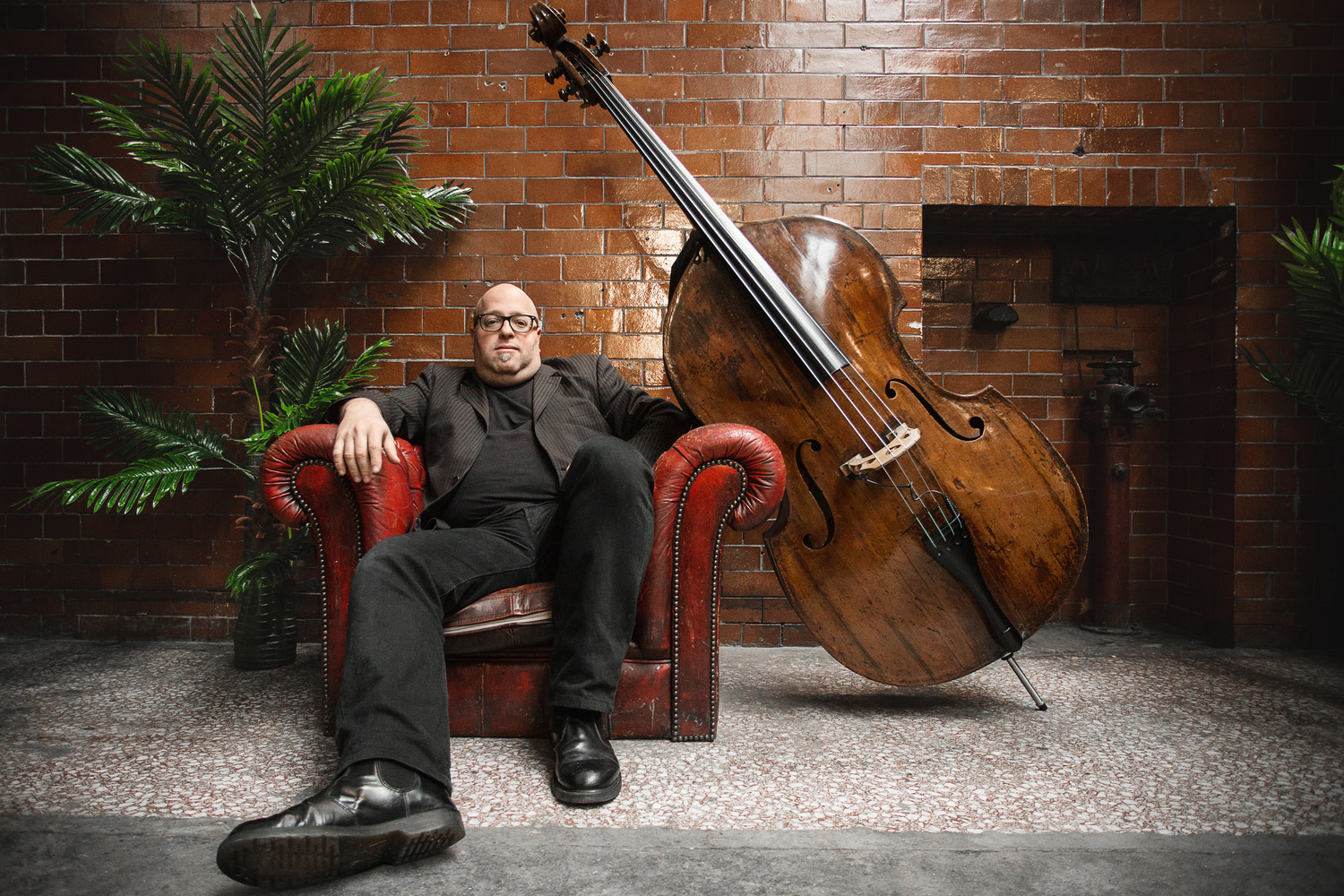In a saturated industry, talent can get lost in the crowds. However, talent in combination with proficient business running expertise can lead to you rising above those crowds. Some business expertise is experience, but some is received wisdom. Here are more of the most important things I've learned through both.
If you haven't read part one, catch up here: Business of Photography: Eight Tips I Wish I Had Known Earlier [Part One]
Part one was well received, which is lucky really, given I had already started working on part two before it was published. It's worth noting, the order of the points from one to eight are arbitrary, and so was the split between part one and two. With no further adieu, let's get right back in there.
5. Tracking Analytics: Working Hard and Working Smart Are Not the Same
I failed on this count in the early days of my career and I failed hard. I wore ninety-hour work weeks like a badge of honor. Timothy Ferriss of "The 4-Hour Work Week" fame pointed out that work will expand to fill the time you allocate for it. That was a profound realization for me, and while I still work long hours, I do it with a view to maximize productivity. The first tip to get started on this is twofold: firstly, set times to do things with clear cutoffs and no just open-ended tasks. Secondly, complete tasks one at a time and don't multitask unless you absolutely have to.
For those of you who have a little paid photography under their belt, I fully recommend a change I made more recently than I'd care to admit. I have a comprehensive Excel spreadsheet for my accounts, with all different forms of income colored differently. That is, I can see how much is brought in by my portrait photography, product photography, writing about photography, and so on. I decided I ought to try and refine my work distribution on two principles: the first is Jack Welch's famous "fire the bottom 10% of your workforce every year", where I will just stop looking for, and doing work that pays me the least for my time. The second is the Pareto principle, where it is suggested that 80% of effects come from 20% of causes. Which for me, can translate in to 80% of my money coming from 20% of my effort. Honestly, I couldn't say how accurate those numbers are, but I did work out where I was making the most money for the least amount of time, and played to it.

Grace Chatto of Clean Bandit
6. Goals Are Everything
I've written on this topic comprehensively, and I've made references to it on more than one occasion but it cannot be stressed enough. If you aren't setting yourself daily, weekly, monthly, yearly, and lifetime goals, you're doing your career a disservice. Not only does it focus your efforts and add order and priority to your short and long-term workflow, it detracts from coasting. I have my daily and weekly goals on my desk in front of my keyboard twenty-four-seven. I then have my yearly and lifetime goals printed out and on a pin board above my monitors. There's something cathartic about crossing them off, but the worth is far deeper than that.
I tend to write my goals in a sliding scale of ambitiousness. My daily goals are fully grounded necessities, plain and simple. My weekly goals are slightly larger picture, but infused with elements of ambition to them. My monthly goals lay out both what I need to get done, and what I would like to get rolling, even if it's farfetched. My yearly goals are mostly points I would like to achieve, no matter if it feels out of reach, as well as aspirations for yearly growth. My lifetime goals are a ridiculous list, scribbled down by a dreamer with no limitations.

Laura Mvula
7. Don't Waste Time and Don't Let People Waste Your Time
This section is again inspired, in part, by Tim Ferriss. I worked office jobs for around four to five years in my late teens and early twenties. When you're just a bog standard employee, the company's time isn't anywhere near as important to you as if you own the company. As a result, the number of feckless, fruitless, and waste-of-life meetings that go on is criminal. When you're working for yourself, and your time is your only gateway to earning, you cannot let this happen. In my first few years as full-time self-employed, I would let people in the industry entice me in to meetings and meet-ups under the banners of networking, touching bases, or discussing future opportunities. Generally, these people wanted to feel as if they were doing something productive while enjoying a relaxing meeting. There's nothing wrong with that; they're good fun and it's nice to chat to people in surrounding industries. But they are an expensive luxury, not a productive essential for growth.
Meetings should be to discuss immediate projects with an obvious agenda with a set time limit. This sounds unsociable and cutthroat, but it's necessary. I had a lovely company in London invite me in for coffee two or three times in my first few years. I'd commute it on my own coin, we'd sit in their nice office and discuss all manner of things; I really liked them and it was interesting. What I didn't get, was a single paid job out of them, neither directly nor indirectly. They had no need for a commercial photographer really, which was obvious if I had analyzed it from a business perspective instead of a social one. Every meeting cost me money, and at least an afternoon of my time. I still speak to them via email, and they invite me to events on occasion that I will go to and chat with them, but I do not do this with a view to getting work.

Yaron Stavi
8. Reliability and Consistency Are as Important as Your Images
These two elements of an "artist" (I still cringe to call myself that) could be seen as secondary properties, but they shouldn't be. I'll break them down individually, not from my opinion, but from what my clients have told me. Agencies and brands I work with regularly become friends of sorts and they will explain why they prefer me over other photographers and I always listen attentively. Secondly, when I open a dialogue with a new prospect, I ask what sort of problems they've had with photographers in the past, and the two above qualities overcome almost all of them.
Reliability: There's a colloquial trend drawn between the artsy types and non-conformist, free spirit personality. That is the last thing a business wants when paying someone to do a job, and although I thought a lot of weight in that opinion was tied up in stereotypes and circumstantial evidence, it appears it isn't. One agency told me they paid a photographer a retainer to produce images every month and yet he'd disappear, sometimes for months without providing the images he owed. Another agency told me that every photographer they had tried wouldn't be contactable for large amounts of time, would miss deadlines, and didn't seem to take the work seriously. Another agency hired me because a photographer they paid a full-time wage to was so slow completing projects, they had to draft someone else in to cover. The list goes on and on, believe me.
Consistency: This is a bit of a tricky quality to nail down. You can resolve to be more reliable, and instantly be more reliable, but to be more consistent isn't quite so linear. Firstly, consistency as I see it, is largely a result of experience. When you're starting out in any discipline — photography or otherwise — your results can be hit and miss, and not entirely predictable. This adds an element of risk for prospect clients as they can't be certain you will be able to reproduce the quality of result that attracted them to you. When I first started out, I had the highly pruned portfolio you're told to create, offering only your best work. While that's good practice in many areas, for my commercial work I found it to be counter-productive. So, instead, I created a gallery of hundreds of campaigns and images for myriad brands and agencies to show the level of quality I am able to provide, time and time again.

Tom Grennan
Conclusion
Eight points over two articles seems a lot now I look back at the words, but it's not nearly enough. My original list is over twice the size, but I distilled those down to the most useful. These articles are by no means a comprehensive account of everything necessary to make a photography business work, but rather all of the things I wish I'd known at day one. Hindsight is a powerful thing and where in some places, learning firsthand was more valuable, there are clear mistakes I could have avoided by merely being told some of the information in these articles.
So now, it's over to you fellow professionals out there to help those looking to begin the journey. What do you wish you had known at the start, that you know now?
Lead image by Pixabay used under Creative Commons, via Pexels
![Business of Photography: Eight Tips I Wish I Had Known Earlier [Part Two]](https://cdn.fstoppers.com/styles/large-16-9/s3/lead/2018/06/business_of_photography_eight_tips_i_wish_i_had_known_earlier_part_two_0.jpg)
![Business of Photography: Eight Tips I Wish I Had Known Earlier [Part One]](https://cdn.fstoppers.com/styles/small-16-9/s3/lead/2018/06/business_of_photography_tips_professional_how_to.jpg)





This is one of the most useful article! Totally agree!
Thanks, Lorenzo. I hope it helps in some way.
Robert K Baggs wrote, “What do you wish you had known at the start, that you know now?”
I wish I had lots more business skill (how much to charge, accounting, etc.) and legal skills (understanding copyright, fair use, how to license vs. sell, how to register my photographs with the US Copyright Office).
These skills are not substantively taught in photo, film, art schools and colleges in my region. I’m shocked at how little instructors and professors and seasoned professionals know about these topics.
Joining a professional photography association like ASMP, PPA, APA, and the Copyright Alliance has been helpful in learning about operating a photography business and protecting its most valuable asset: My copyrights!
"When I first started out, I had the highly pruned portfolio you're told to create, offering only your best work. While that's good practice in many areas, for my commercial work I found it to be counter-productive. So, instead, I created a gallery of hundreds of campaigns and images for myriad brands and agencies to show the level of quality I am able to provide, time and time again." -- How about having both on your website? A mean and lean portfolio (top menu), and a separate set of focused galleries (side menu). The portfolio shows off your vision at its very best, and the galleries show the breadth and depth in the application of your vision. Overall an excellent article. You mentioned that you had several more points in addition to these 8 - how about some more articles on the rest?